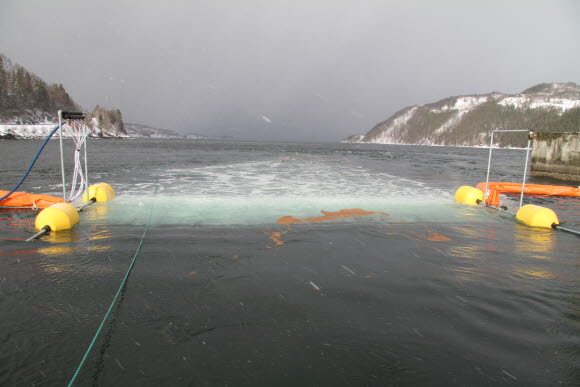“If algae blooms are discovered, we take action. It may be to put out bubble curtains that act as a physical barrier to the algae,” said Cermaq communications manager Astrid Aam.
In mid-May, Cermaq, like a number of farmers in Northern Norway, ended up in an acute situation with algae blooms and subsequent mortalities at one of its plants.
Like their competitors Mowi and Grieg Seafood, Astrid Aam said that algae blooms are more common in Canada than in Norway and that there are several measures in place to handle the situation.
“In Canada, we regularly see algae blooms and we have a comprehensive monitoring program. In addition, we have an algae coordinator who works specifically with the algae problem,” said Aam.
- Read more: Mowi Canada uses tarpaulins and an upstream circulation of water in the fight against algae
Surveillance
“When it comes to monitoring, our employees at the facilities take water samples daily as they check in the microscope to identify if there are any harmful algae. We also send in samples to the Harmful Algae Monitoring Plan (HAMP), which collects data from most aquaculture companies, and makes us get a good mapping of algae deposits,” said Aam.
But there are more than just water samples used to follow. “We also do monitoring and modelling from the air, to track algae blooms and to make forecasts of how they move,” said Aam.
Bubble curtain
If algae blooms are discovered, Cermaq quickly jumps into action.
“It may be putting out bubble curtains that act as a physical barrier to the algae,” said Aam, adding: “We also stop feeding the fish so that it stays deeper, but also to lower the metabolism so that the fish breathe more slowly and the potential amount of algae entering the gills can be reduced. This also reduces stress for the fish and helps keep it stronger and healthier.”

